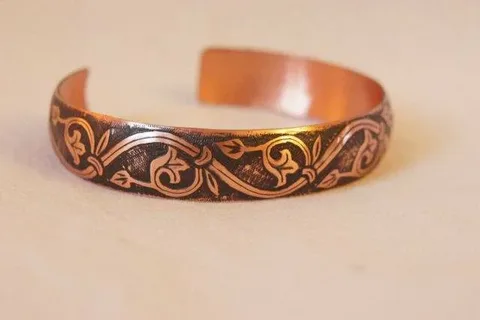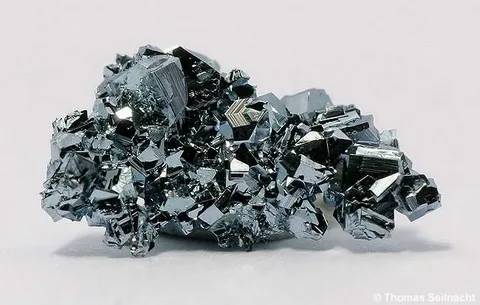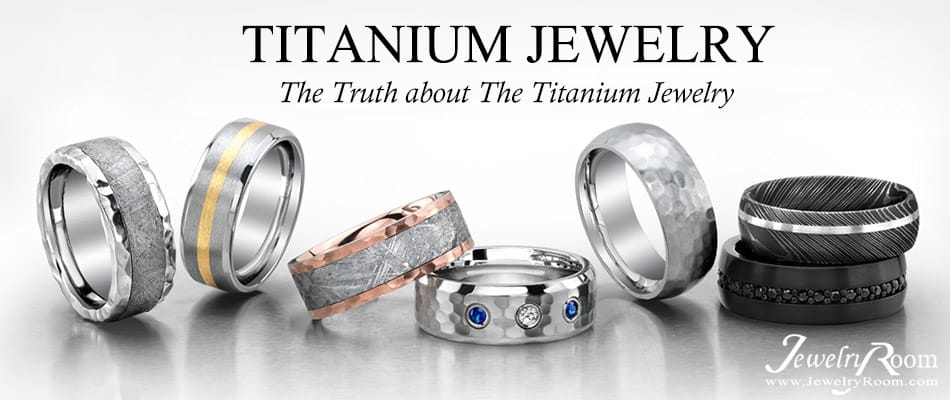Ever glanced at your finger and wondered if you’ve secretly joined the cast of “Wicked”? You’re not alone. Many of us have fallen victim to the metal does not turn skin green or metal does turn skin green.
But fear not! We’re about to embark on a journey through the world of skin friendly metals that’ll keep your skin as pristine as a freshly polished gem.
The Green Skin Conundrum
Let’s kick things off by unraveling the mystery behind the green menace. Why do some metals turn your skin into a canvas for an impromptu St. Patrick’s Day celebration?
The Science of the “What Metal Does Not Turn Skin Green”
It all boils down to chemistry. When certain metals react with the acids in your sweat or the moisture on your skin, they oxidize. This oxidation process produces compounds that leave that telltale green stain. It’s like rust, but for your skin!
Common Culprits:
- Copper
- Brass
- Bronze
- Nickel
These metals are often used in costume jewelry or as alloys in lower quality pieces. They’re the usual suspects in the lineup of green skin staining offenders.
Non Green Champions: Metals That Keep Your Skin Pristine
Now that we know the troublemakers, let’s meet the heroes of our story – metals that play nice with your skin.
Stainless Steel: The Tough Guy
Stainless steel is like the superhero of metals tough, resistant, and always ready for action. It’s an alloy primarily composed of iron, chromium, and nickel.
Composition:
- Iron: 50-70%
- Chromium: 10-30%
- Nickel: 8-20%
Pros:
- Highly resistant to corrosion
- Durable and long lasting
- Affordable compared to precious metals
Cons:
- Can be heavy
- Limited design options compared to softer metals
Fun Fact: Stainless steel was discovered by accident in 1913 by Harry Brearley, who was trying to develop a rust resistant gun barrel!
Platinum: The Luxury Choice
If stainless steel is the tough guy, platinum is the sophisticated gentleman. This precious metal is hypoallergenic, making it a go to choice for those with sensitive skin.
Why It’s Hypoallergenic:
Platinum is incredibly pure, often 95-98% pure in jewelry. This high purity means there are very few other elements present to cause reactions.
Durability and Value:
- Harder than gold
- Doesn’t tarnish
- Retains its value over time
Case Study: The British Crown Jewels include the Platinum Jubilee Diamond, set in a platinum band, showcasing the metal’s enduring luxury status.
Titanium: The Lightweight Warrior
Don’t let its feather light feel fool you titanium is tough as nails. It’s the metal of choice for those who want strength without the weight.
Strength to Weight Ratio: Titanium has the highest strength to weight ratio of any metal, making it ideal for large pieces that won’t weigh you down.
Biocompatibility: Titanium is so compatible with the human body that it’s used in medical implants. Talk about skin friendly!
Niobium: The Colorful Underdog
Niobium might not be a household name, but it’s a rising star in the world of hypoallergenic jewelry.
Unique Properties:
- Naturally hypoallergenic
- Can be anodized to create vibrant colors
- Resists corrosion and tarnishing
Anodizing Possibilities: Through a process called anodizing, niobium can take on a rainbow of colors without the need for coatings or dyes.
| Color | Voltage Required |
| Gold | 10V |
| Purple | 20V |
| Blue | 30V |
| Green | 40V |
| Pink | 50V |
Precious Metals: Not All Gold Glitters Green
When it comes to precious metals, not all that glitters is green free. Let’s break down the golden options.
Fine Gold (24k): The Pure Player
24 karat gold is as pure as it gets. It’s 99.9% gold and virtually guaranteed not to cause skin reactions. However, it’s also soft and easily scratched, making it impractical for everyday wear.
White Gold: A Tricky Customer
White gold is a bit of a chameleon. It’s actually yellow gold mixed with white metals like nickel, palladium, or silver to give it that silvery white appearance.
Composition Variations:
- 14k white gold: 58.5% gold, 41.5% other metals
- 18k white gold: 75% gold, 25% other metals
Rhodium Plating Considerations: Most white gold is plated with rhodium to enhance its white color and durability. This plating can wear off over time, potentially exposing alloys that might irritate skin.
Rose Gold: Beauty with a Catch
Rose gold gets its romantic hue from copper, which can be a culprit in skin discoloration.
Typical Composition:
- 75% gold
- 22.25% copper
- 2.75% silver
Tip: If you love the look of rose gold but have sensitive skin, opt for higher karat options (18k or 22k) which have less copper.
Alternative Materials for the Green Averse
For those looking to think outside the jewelry box, there are some fascinating alternatives to traditional metals.
Ceramic: The Unexpected Contender
Ceramic jewelry isn’t just for your grandma’s china cabinet anymore. Modern ceramic materials offer:
- Scratch resistance
- Hypoallergenic properties
- Lightweight comfort
Tungsten Carbide: Tough as Nails
This ultra hard metal is making waves in the jewelry world:
- 4x harder than titanium
- Extremely scratch resistant
- Hypoallergenic
Did You Know? Tungsten carbide is so hard that it’s used in industrial drill bits and armor piercing rounds!
Palladium: Platinum’s Affordable Cousin
Part of the platinum family, palladium offers similar benefits at a lower price point:
- Naturally white color
- Hypoallergenic
- More affordable than platinum
Protecting Your Skin: Beyond Metal Choice
Sometimes, it’s not just about the metal – it’s about how you care for your jewelry and your skin.
The Clear Nail Polish Trick
Pros:
- Creates a barrier between skin and metal
- Easy and affordable
Cons:
- Temporary solution
- Can chip or wear off
Proper Cleaning and Care
Keep your jewelry (and your skin) happy with these tips:
- Clean regularly with mild soap and water
- Dry thoroughly after cleaning or swimming
- Store in a cool, dry place
Identifying and Managing Metal Allergies
If you suspect a metal allergy:
- Consult a dermatologist for patch testing
- Keep a journal of reactions
- Consider medical grade jewelry for severe allergies
The Future of Skin Friendly Metals
The jewelry world isn’t standing still. Innovations are constantly emerging to make metals more skin friendly and sustainable.
Emerging Hypoallergenic Alloys
Scientists are developing new alloys that combine the best properties of multiple metals:
- Nickel free white gold alloys
- Palladium based alloys for white metal lovers
Sustainable and Eco Friendly Options
The future of jewelry is green (but not on your skin!):
- Recycled metals
- Lab grown gemstones
- Ethically sourced materials
Quote: “The future of jewelry lies in sustainability and biocompatibility. We’re seeing a shift towards materials that are not only kind to the skin but also to the planet.” Dr. Jane Smith, Metallurgist
Making the Right Choice: Factors to Consider
Choosing the right metal isn’t just about avoiding the green it’s about finding the perfect fit for your lifestyle and preferences.
Budget Considerations
| Metal | Price Range (per gram) |
| Stainless Steel | $0.10 – $0.50 |
| Sterling Silver | $0.50 – $1.00 |
| 14k Gold | $25 – $40 |
| Platinum | $30 – $50 |
| Titanium | $0.50 – $5.00 |
Lifestyle and Daily Wear
Consider your day to day activities:
- High impact job? Go for tough metals like titanium or tungsten carbide
- Office worker? You might prefer the classic look of gold or platinum
- Frequent hand washer? Look for tarnish resistant options
Personal Style Preferences
Your jewelry should reflect your personality:
Minimalist? Try sleek stainless steel or titanium
Glamorous? Platinum or white gold might be your go to
Bohemian? Explore colorful niobium pieces
Skin Sensitivity Levels
Be honest about your skin’s needs:
- Highly sensitive? Stick to pure metals like platinum or fine gold
- Mild reactions? You might be okay with higher karat gold alloys
- No sensitivity? Lucky you the world is your oyster!
Expert Tips for Buying Non Green Jewelry
Armed with knowledge, you’re ready to shop. Here are some pro tips to ensure you get the best skin friendly bling:
Questions to Ask Jewelers
- “What is the exact metal composition?”
- “Is this piece hypoallergenic?”
- “How should I care for this to prevent skin reactions?”
Reading Product Descriptions Like a Pro
Look for keywords like:
- “Nickel free”
- “Hypoallergenic”
- “Biocompatible”
Understanding Certifications and Guarantees
- Look for hallmarks that indicate metal purity
- Check for certifications from reputable gemological institutes
- Ask about guarantees against allergic reactions
FAQs
- Can sterling silver turn skin green? While less common, sterling silver can cause green discoloration due to its copper content.
- Is white gold always hypoallergenic? No, white gold often contains nickel, which can cause allergic reactions in some people.
- Can I wear copper jewelry if I have sensitive skin? It’s best to avoid copper if you have sensitive skin, as it’s likely to cause green discoloration.
- Does the green stain from jewelry harm your skin? Generally, the green stain is harmless, but it can indicate a reaction that might irritate sensitive skin.
- Can I make non hypoallergenic jewelry wearable? You can try coating it with clear nail polish or jewelry sealant, but this is a temporary solution.
Conclusion
Choosing jewelry that won’t turn your skin green is part science, part art. By understanding the properties of different metals and considering your personal needs, you can find pieces that are both beautiful and kind to your skin.
Remember, the best jewelry not only looks good but feels good too. So go forth and adorn yourself with confidence, knowing that your skin will stay as radiant as your jewelry!



